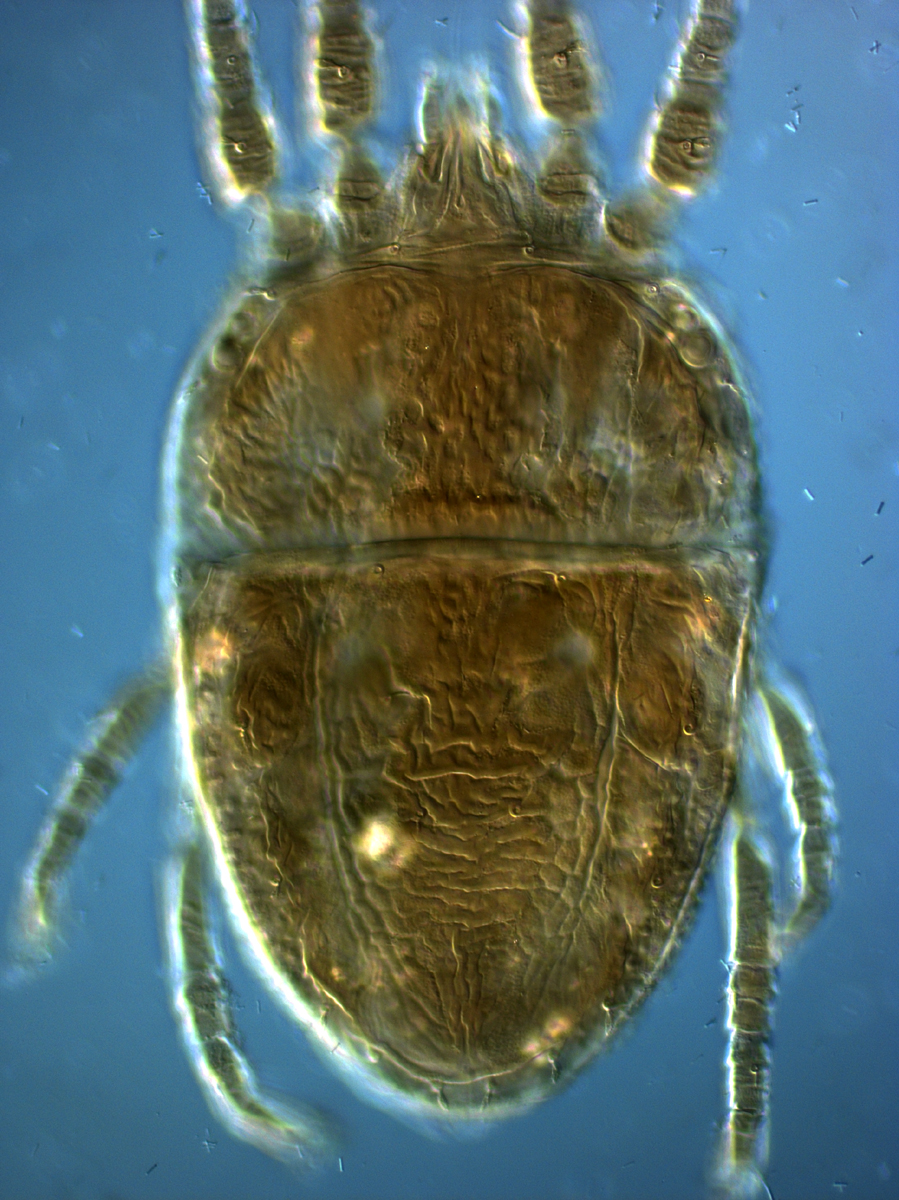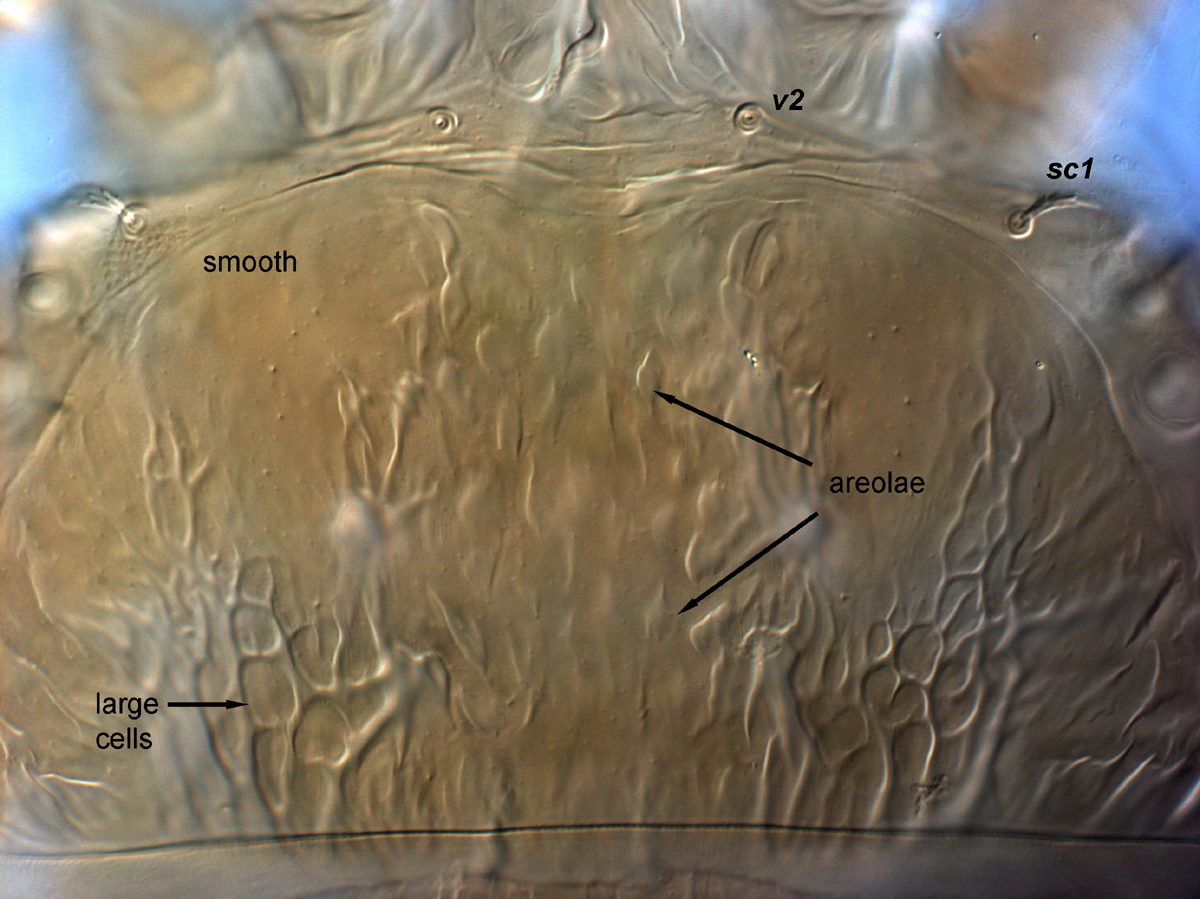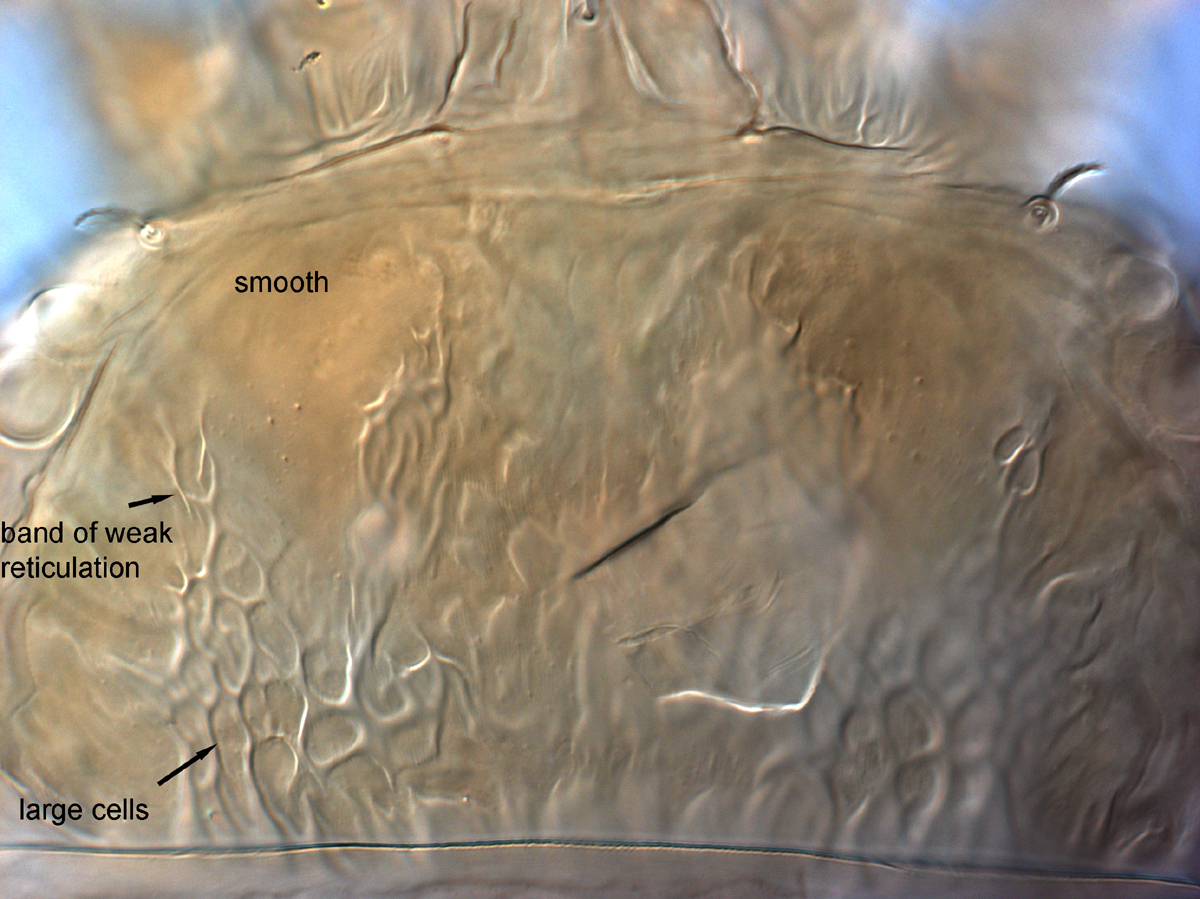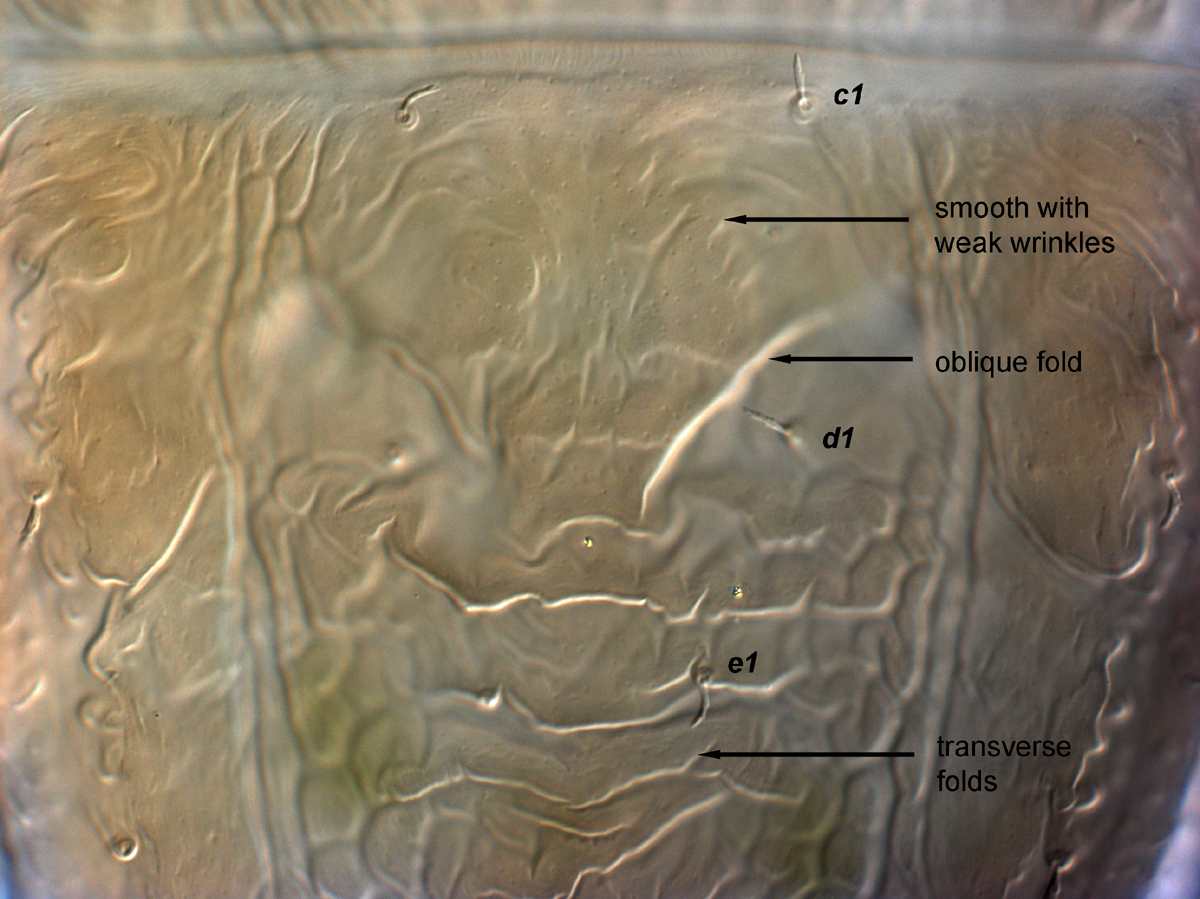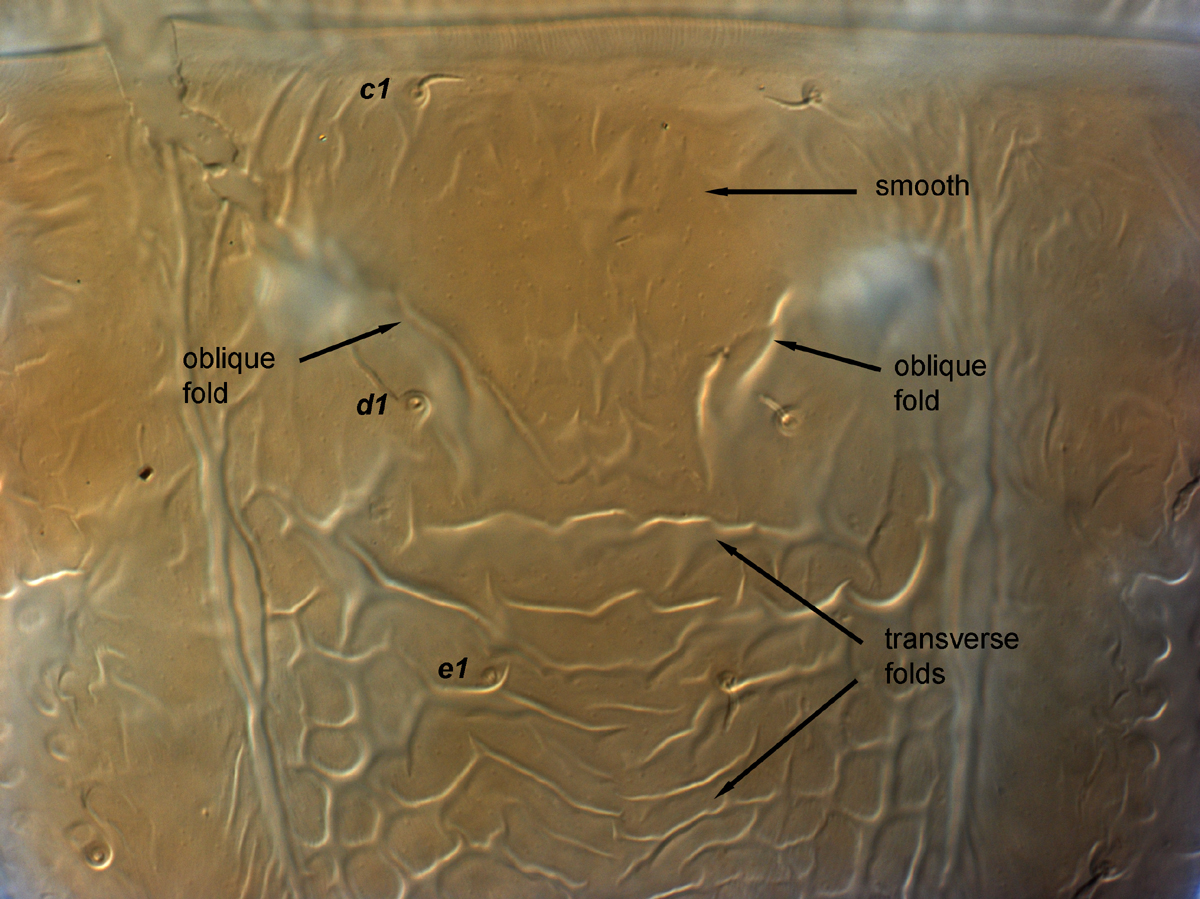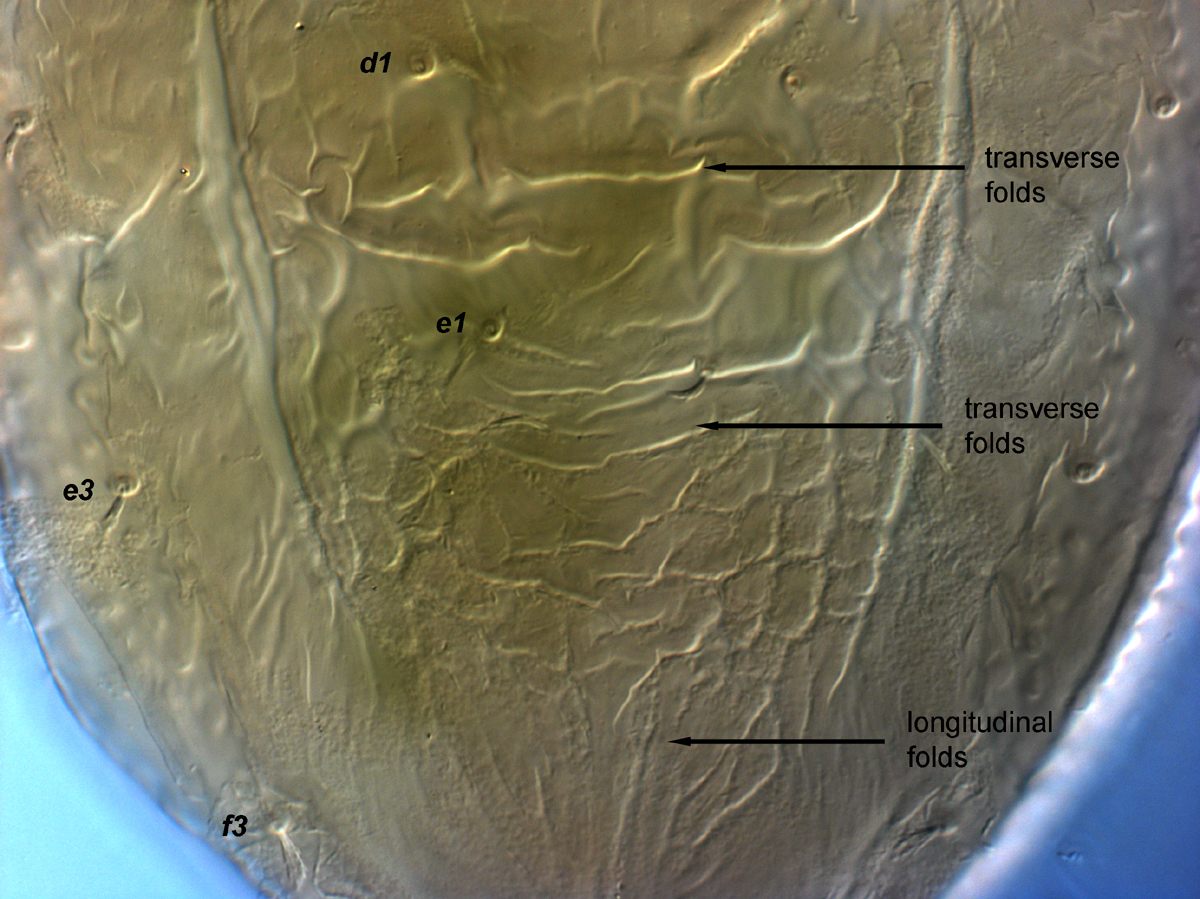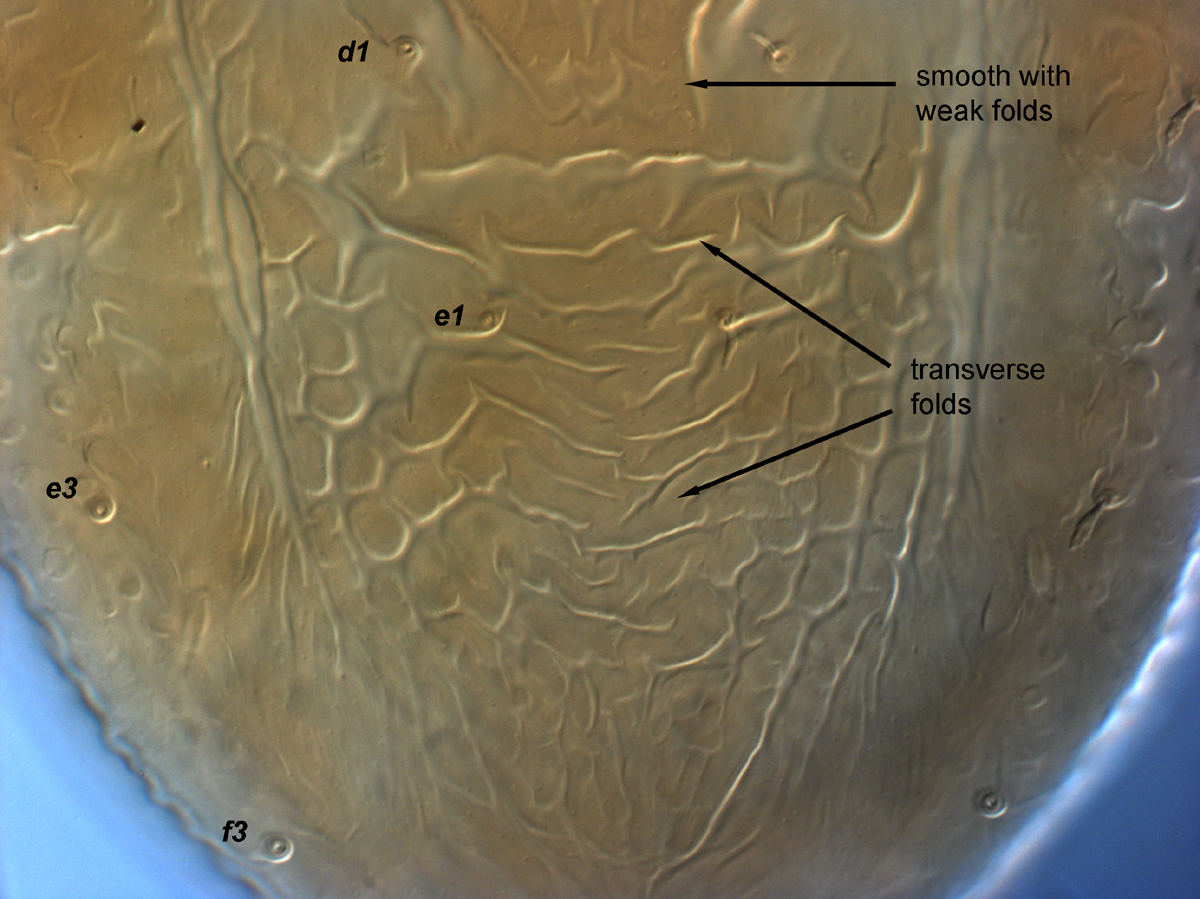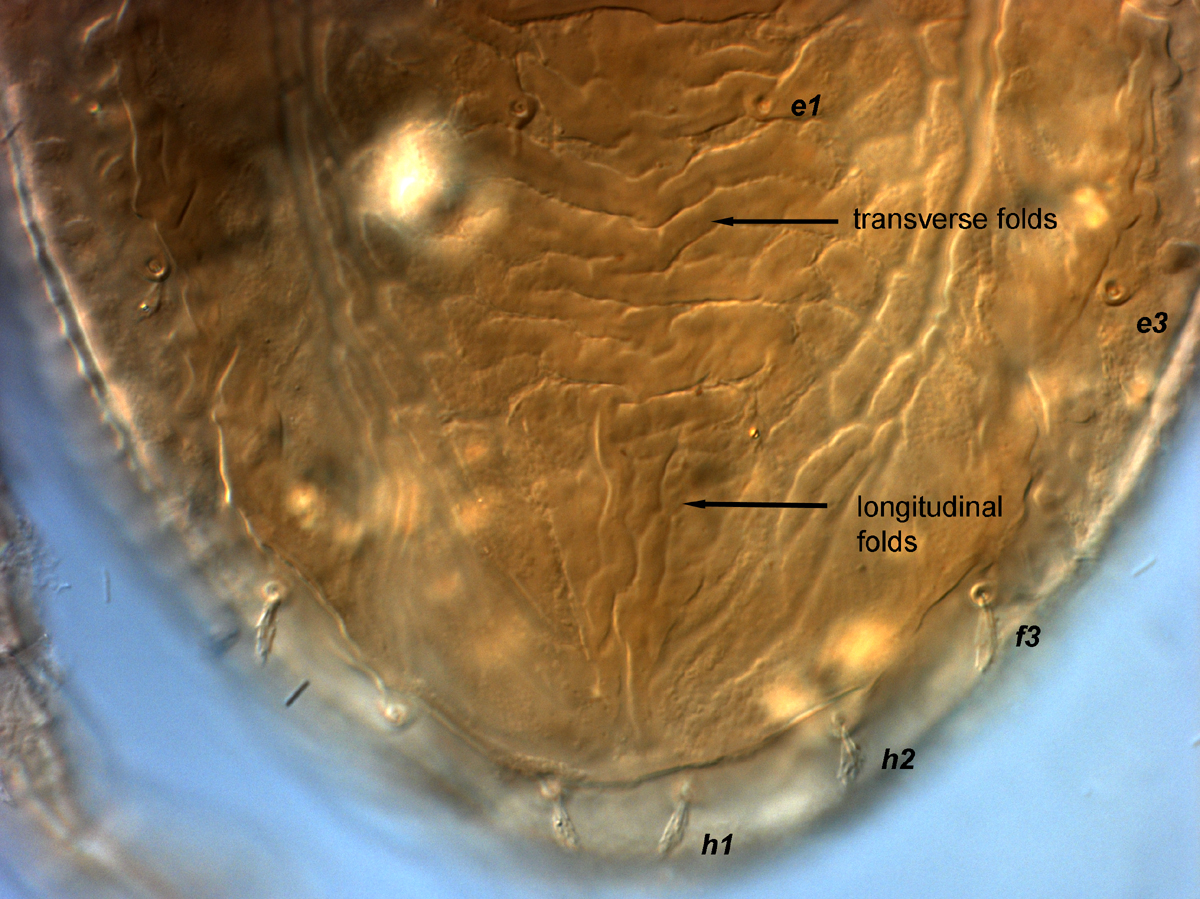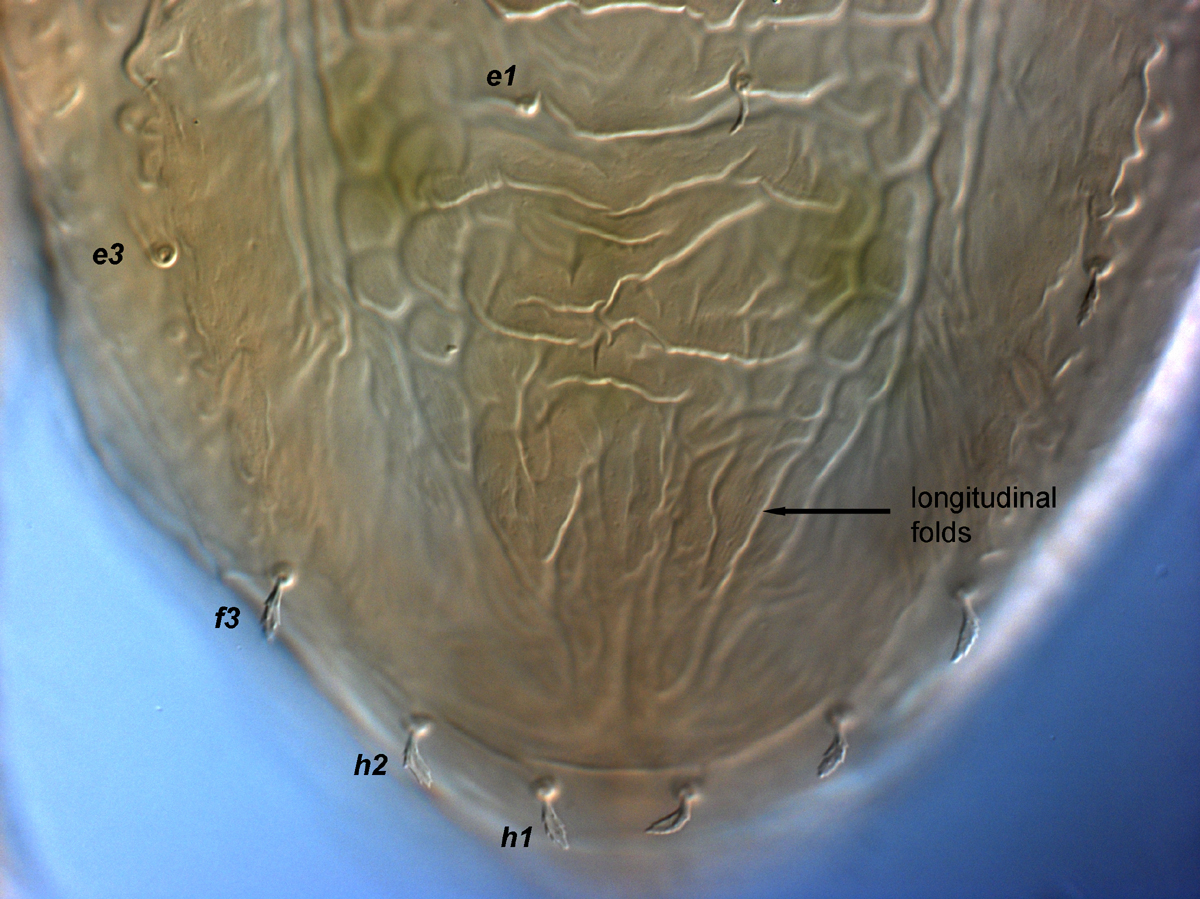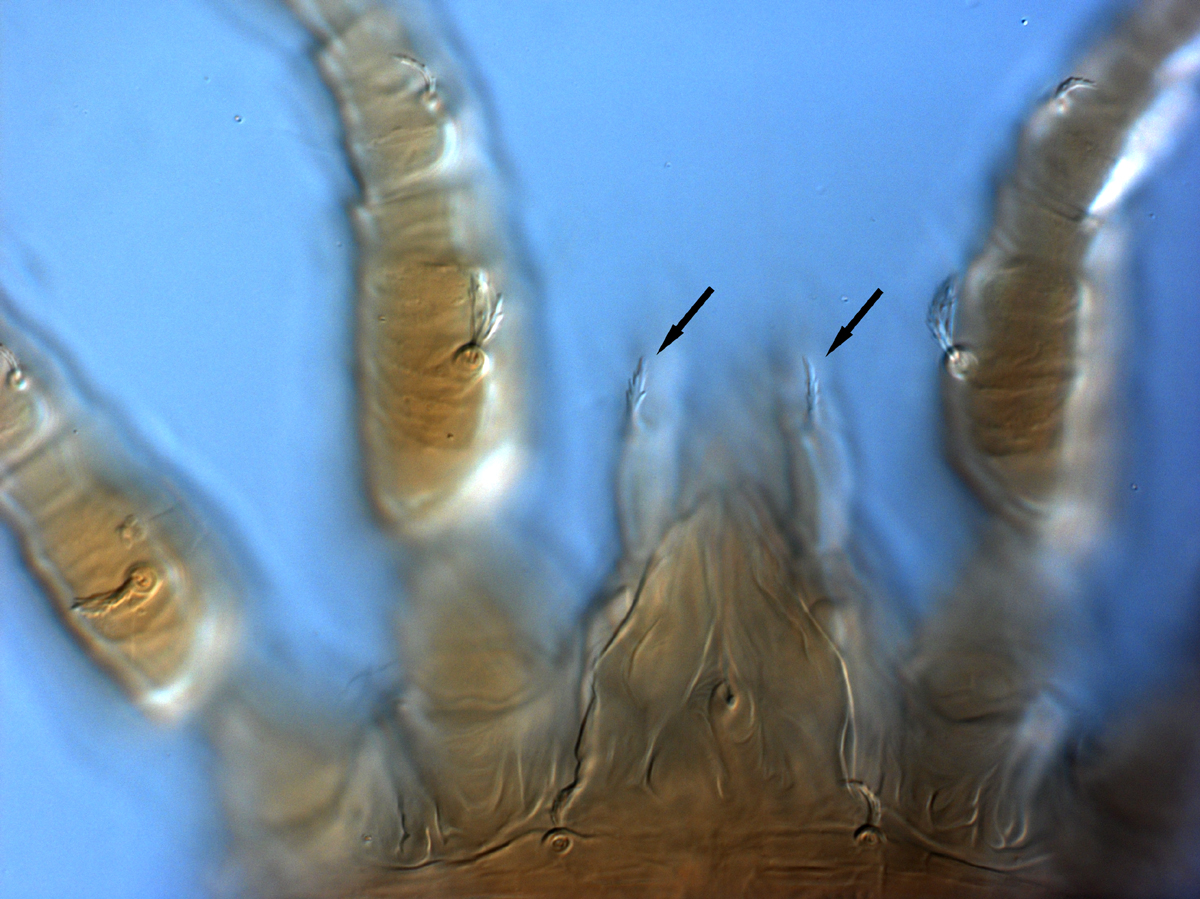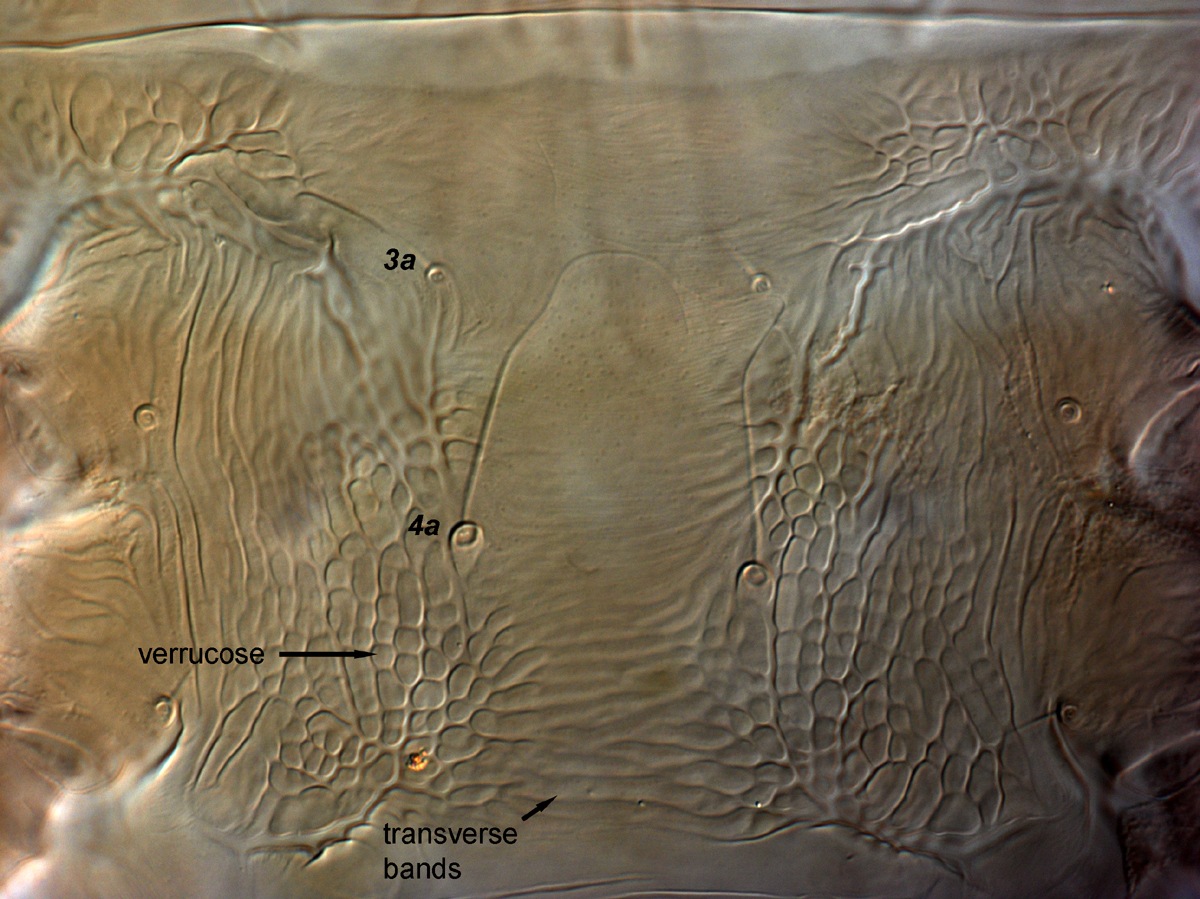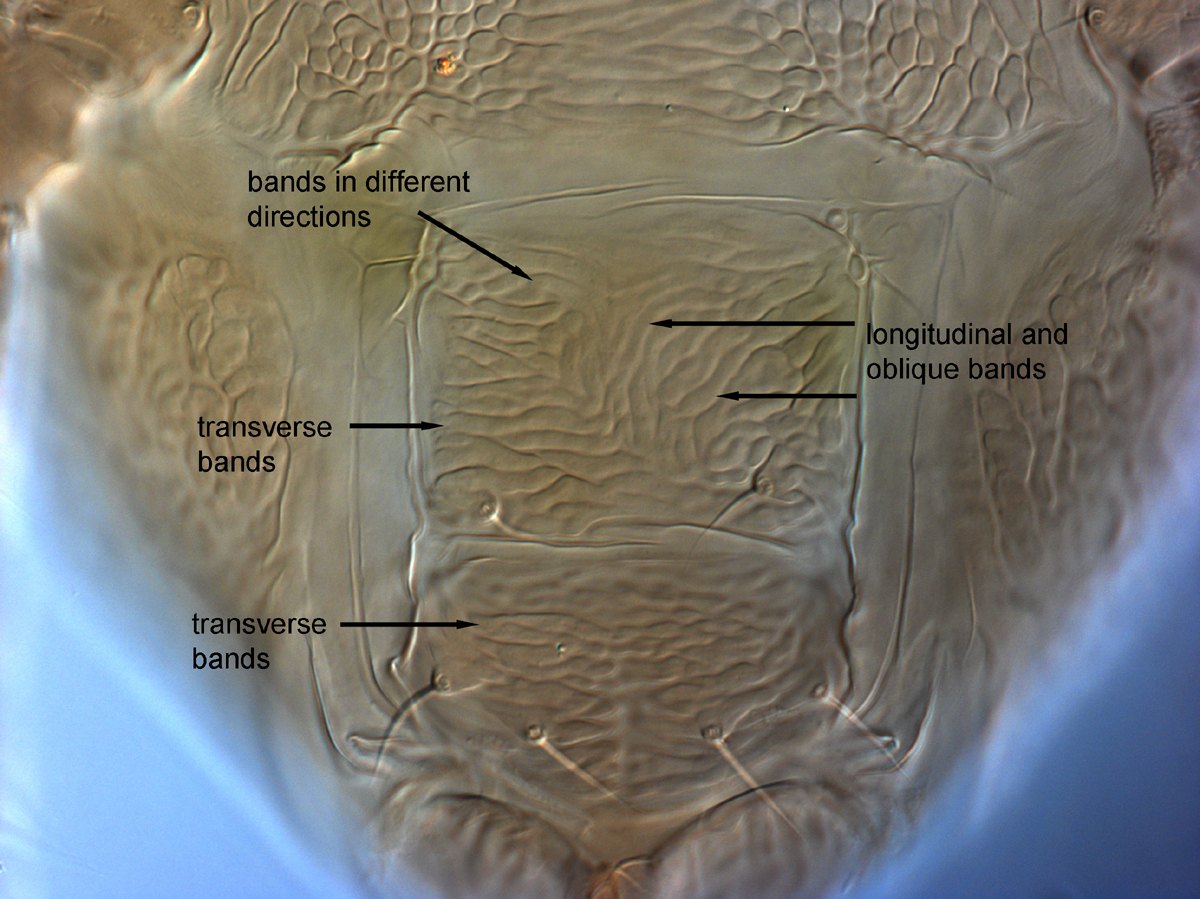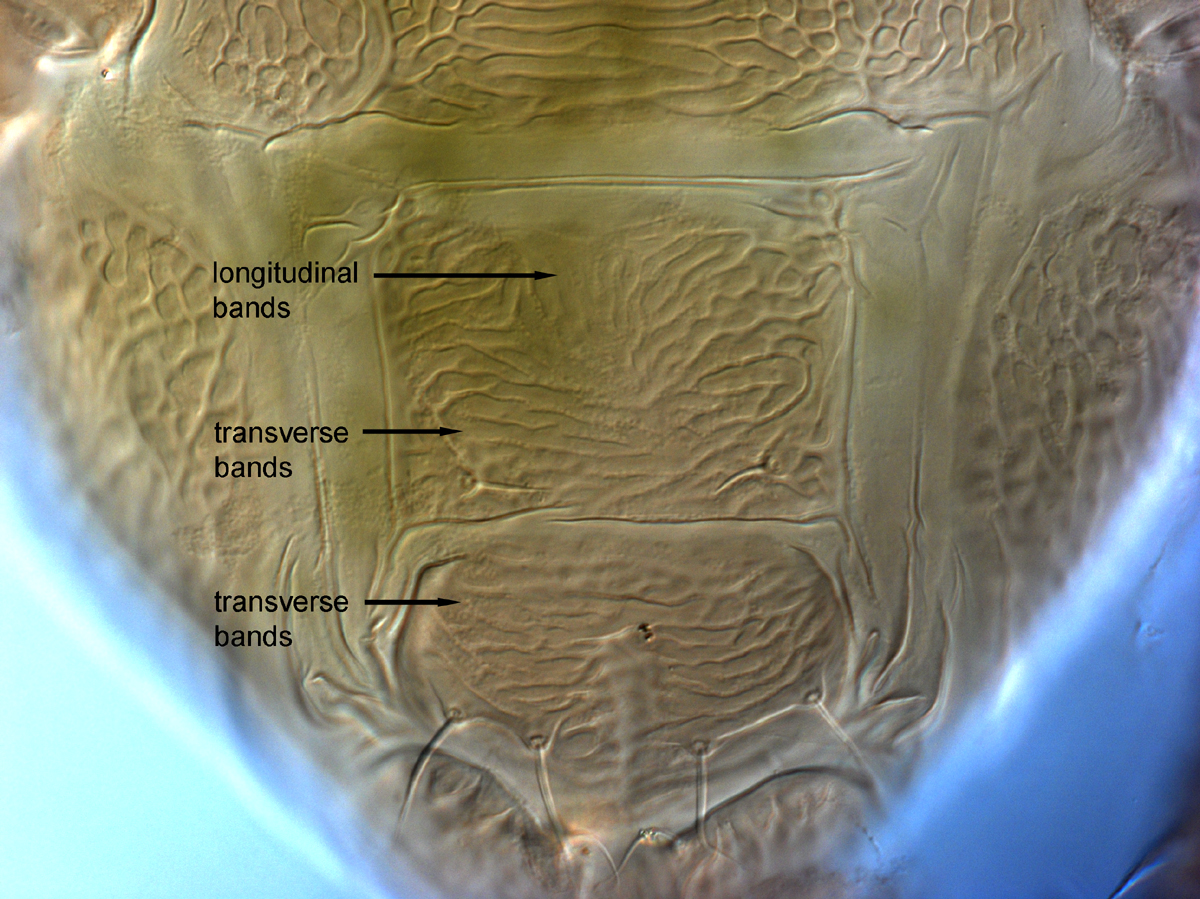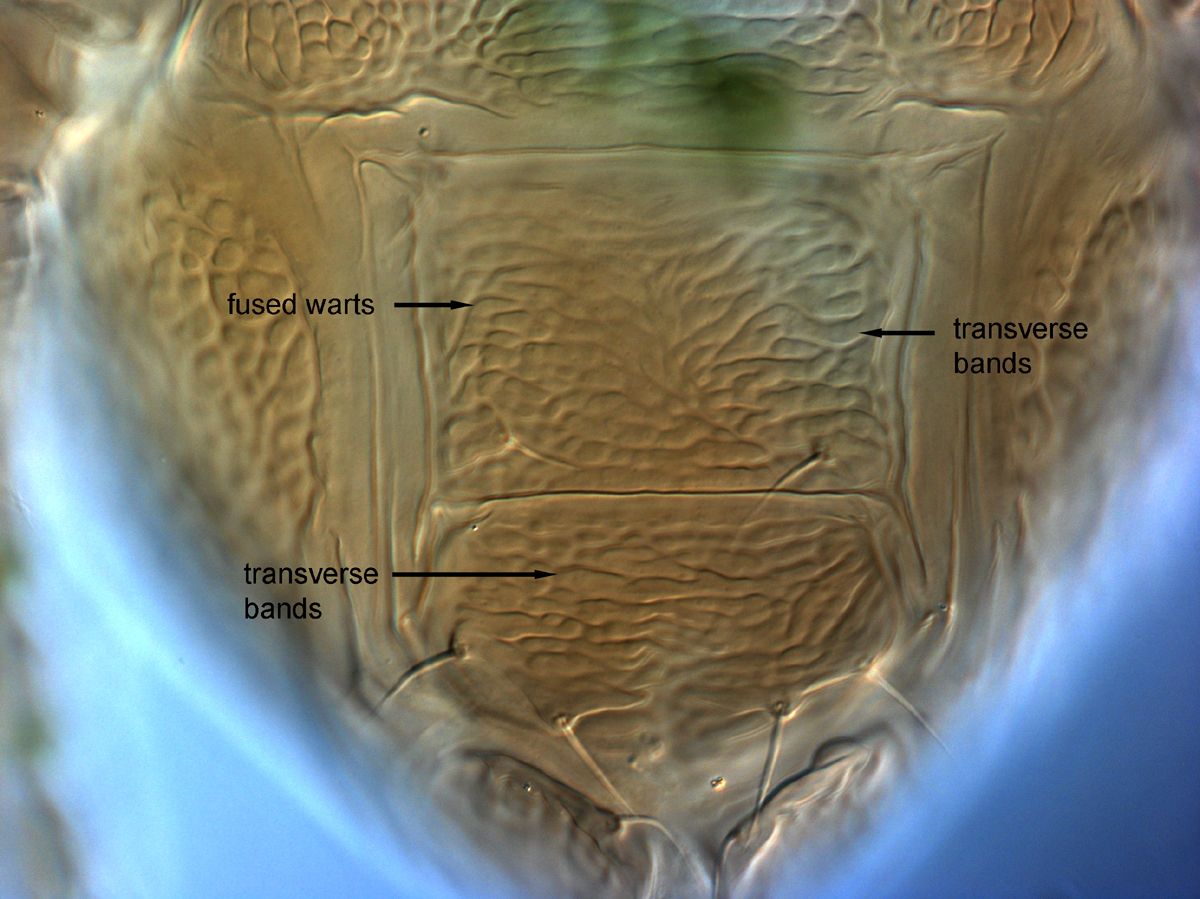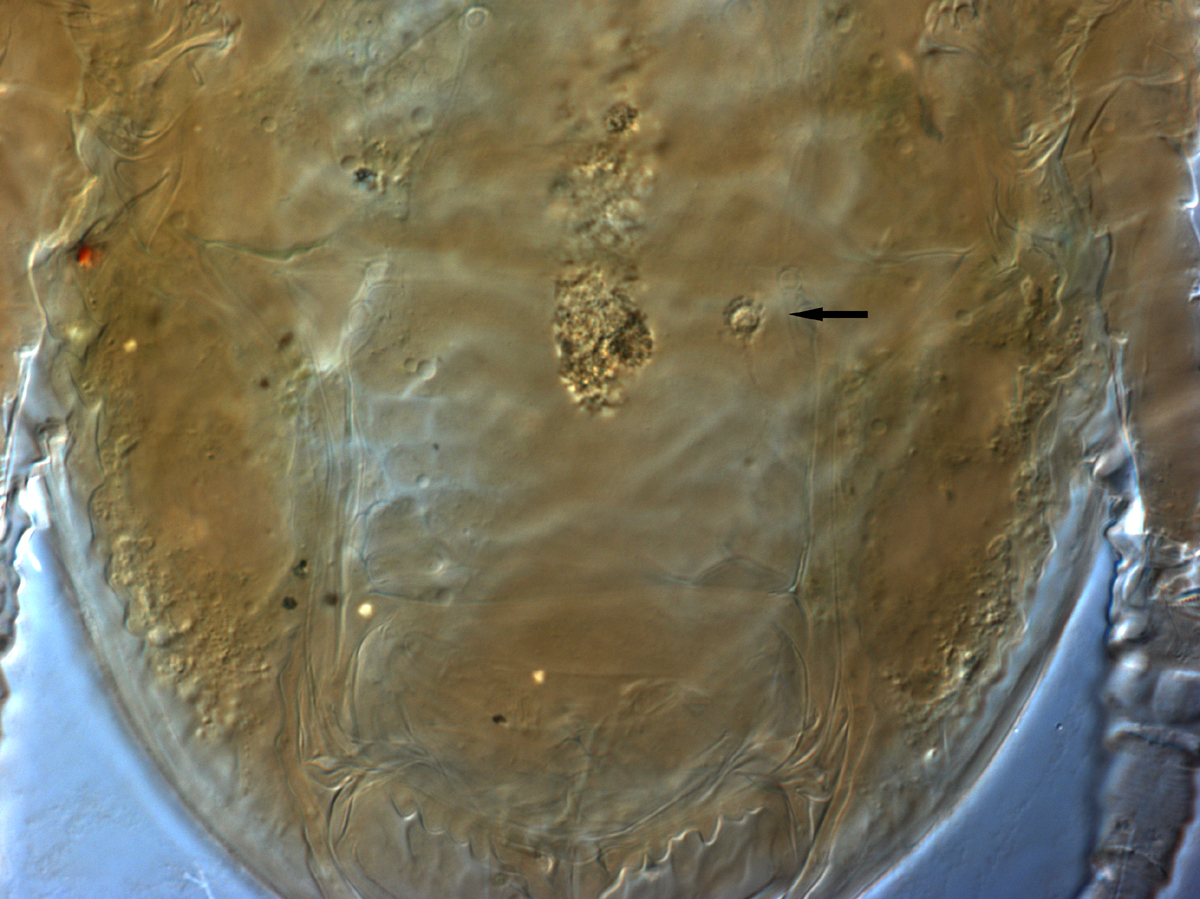Brevipalpus papayensis
|
Fig. 1. Brevipalpus papayensis, female dorsum (paratype). |
|
Fig. 2. Brevipalpus papayensis, female prodorsum (paratype). |
|
Fig. 3. Brevipalpus papayensis, female prodorsum (paratype). |
|
Fig. 4. Brevipalpus papayensis, female anterior dorsal opisthosoma (paratype). |
|
Fig. 5. Brevipalpus papayensis, female anterior dorsal opisthosoma (paratype). |
|
Fig. 6. Brevipalpus papayensis, female central dorsal opisthosoma (paratype). |
|
Fig. 7. Brevipalpus papayensis, female central dorsal opisthosoma (paratype). |
|
Fig. 8. Brevipalpus papayensis, female posterior dorsum (paratype). |
|
Fig. 9. Brevipalpus papayensis, female posterior dorsum (paratype). |
|
Fig. 10. Brevipalpus papayensis, female dorsal seta on palp (indicated by arrows) (paratype). |
|
Fig. 11. Brevipalpus papayensis, female venter, between coxae III-IV (paratype). |
|
Fig. 12. Brevipalpus papayensis, female venter, between coxae III-IV (paratype). |
|
Fig. 13. Brevipalpus papayensis, female posterior venter (paratype). |
|
Fig. 14. Brevipalpus papayensis, female posterior venter (paratype). |
|
Fig. 15. Brevipalpus papayensis, female posterior venter (paratype). |
|
Fig. 16. Brevipalpus papayensis, female spermatheca (indicated by arrow) (paratype). |
Authority
Baker
Species group characters
Brevipalpus phoenicis species group
Dorsal opisthosomal setae f2 absent; tarsi II with 2 solenidia (one adaxial, one abaxial). Palps four segmented, setal formula 0-1-2-3(1s+2e) (s = solenidion, e = eupathidium).
Setal formula for legs I-IV (coxae to tarsi): 2-2-1-1, 1-1-2-1, 4-4-2-1, 3-3-1-1, 5-5-3-3, 9(1)-10(1)-5-5. Leg chaetotaxy: feI-II d, l', v', bv", fe III d, ev', fe IV ev'; ge I-II d, l', l", ge III-IV l'; ti I-II d, l', l", v', v", ti III-IV d, v', v".
Distribution based on confirmed specimens
USA
Species characters
Adult female habitus
Figure 1
Prodorsum
Central (Figs. 2, 3): cuticle with strong areolae
Sublateral (Figs. 2, 3): posterior region with some reticulation forming a few large cells; anterior region with large smooth region and narrow band of weak reticulation
Opisthosoma
c1-c1 to d1-d1: cuticle smooth or weakly wrinkled; with a pair of distinct oblique folds adjacent to setae d1 (Figs. 4, 5)
d1-d1 to e1-e1: cuticle smooth or with weak irregular folds, with a few strong transverse folds (Figs. 6, 7)
e1-e1 to h1-h1: cuticle with several transverse folds abruptly becoming longitudinal folds towards h1 (Figs. 8, 9)
Sublateral: cuticle reticulate with large uniform cells, some cells rounded; lateral cells becoming longitudinally elonagate towards posterior (Figs. 7, 8, 9)
Palp
palp femur with barbed, broadly setiform dorsal seta (Fig. 10)
Venter
Setae 4a-ventral plate (Figs. 11, 12): cuticle verrucose laterally with separately formed rounded "warts"; central cuticle with transverse bands formed from fused "warts"
Ventral plate (Figs. 13, 14, 15): cuticle with bands of mixed orientation; lateral and posterior bands tend to be transverse, central bands tend to be oblique
Genital plate (Figs. 13, 14, 15): irregular narrow transverse bands
Spermatheca
A long moderately thick duct, ending in a sclerotised spherical vesicle with a crown of minute proejctions (Fig. 16)
Hosts based on confirmed specimens
Carica papaya (papaya; Caricaceae)
Remarks
Previously listed as Brevipalpus phoenicis species group sp. C.
Beard, J.J., Ochoa, R., Braswell, W.E. & Bauchan, G.R. (2015) Brevipalpus phoenicis (Geijskes) species complex (Acari: Tenuipalpidae) — a closer look. Zootaxa, 3944(1), 1-67. (open access: http://www.mapress.com/zootaxa/list/2015/3944%281%29.html)

